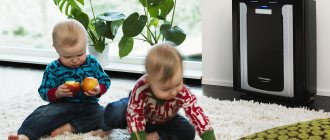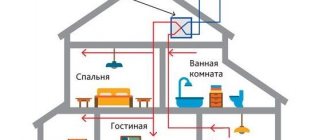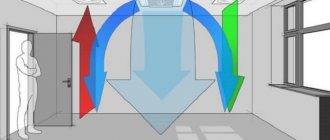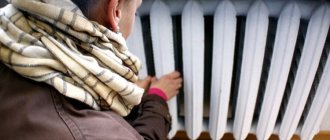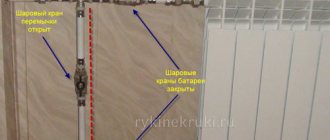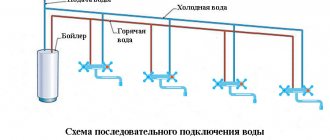What is air humidity
In molecular physics, air humidity refers to the content of water vapor molecules in the air around a person. One hundred percent humidity is characterized by the appearance of condensation on surfaces. There is precipitation outside at these levels.
Normal humidity in a living space is usually different from that outside. In an apartment it is more stable, while in the environment it changes under the influence of changing seasons - in autumn and spring it is higher, in winter when there is frost and in summer when it is very hot it is lower.
Fluctuations in humidity are caused by temperature. When it is too high, water molecules evaporate, and when it is very low, they crystallize. In a living room, air is most often made dry by central heating radiators.
What does deviation from the norm lead to?
If the average room humidity is significantly higher than normal (more than 20–30%), various problems may arise:
- The appearance of mold. A humid and warm environment is the optimal condition for the development of fungal spores. Mold most often forms in the bathroom, kitchen, and corners of rooms. In children and people with weakened immune systems, it can cause respiratory problems and allergic reactions. For asthmatics, damp rooms are dangerous because prolonged exposure to them provokes frequent attacks.
- Increased heat transfer. In hot summer weather, high temperatures are felt worse when there is an increased content of moisture particles in the air. The result may be overheating or heatstroke.
Dependence of the development of diseases and fungi on the humidity in the apartment
It is the state of health of the residents of the room that determines what humidity should be in the house. Too high is not suitable for asthmatics, allergy sufferers, small children, people with hypertension, cardiovascular diseases and immunodeficiency.
If the humidity level in a room for a person is not met and the air is too dry, this is also harmful to health:
- Dry mucous membranes. This can manifest as itching and irritation of the eyes, especially in people with contact lenses, a sore throat, and a hacking cough.
- Difficulty breathing. When the mucous membranes of the nasopharynx dry out, they do not perform their protective functions. A person becomes susceptible to colds and infections, nosebleeds, chronic rhinitis, and exacerbation of bronchial asthma.
- Deterioration of skin condition. Peeling, irritation, redness, the appearance of wrinkles - all this occurs against the background of a violation of the hydrobalance of the skin. High air humidity has a particularly bad effect on people with psoriasis, atopic dermatitis and other dermatological diseases.
Most unpleasant symptoms do not appear immediately. But if there is no normal humidity in the apartment, sooner or later its residents will begin to experience discomfort.
Consequences for violation of standard indicators
In the winter season, the heating season begins in the house, which significantly dries out the air inside the apartment. People living inside may feel discomfort in the dry mucous membranes of the nose and throat. Hair becomes dry, brittle, and skin peels. If there is an incorrect level of humidity in a room, an unpleasant phenomenon called static electricity appears. This process becomes the basis for the spread of mites and microbes. The main problems that can arise when the air is too dry:
- diseases and unpleasant consequences for the skin - dermatitis, cracks, wrinkles, peeling skin, problems with the mucous membrane. The skin becomes dry, loses elasticity, hair and nail plates break;
- eye problems - itching, dryness of the eyeball, redness. As a result, conjunctivitis, a feeling of specks in the eye, may occur;
- the heart valve wears out faster. A person often gets tired quickly, complains of headaches, and activity and performance decrease. The heart is subjected to severe stress, the blood becomes thicker;
- Metabolism and the general functioning of the gastrointestinal tract deteriorate - the viscosity of gastric and intestinal juice becomes higher;
- dryness occurs inside the respiratory tract, local immunity becomes weaker, a person gets colds and gets sick more often;
- air quality becomes much lower - allergens accumulate in the air masses, which under normal conditions with normal humidity are bound by water particles.
Insufficient humidity affects plants, animals, furniture and household utensils made of wood; sometimes finishing work has to be done again - the coatings become faded and crack.
Is it good or bad if the moisture level is elevated?
A high percentage of room humidity can cause problems such as:
- become frequent guests of respiratory tract diseases - rhinitis, forms of bronchitis, pneumonia, allergic reactions, the condition of asthmatics worsens - the disease turns into a chronic form, which practically cannot be treated;
- the condition in the room worsens, stuffiness, dampness appears and an uncomfortable feeling arises;
- there is no feeling of freshness - pathogenic microbes multiply, which cause unpleasant odors;
- The laundry takes much longer to dry and remains damp.
Increased humidity by several percent provokes the active development of harmful microorganisms: fungal, pathogenic, mold. The environment around a person reacts sensitively to increased humidity - plants rot and disappear. Mold appears on ceilings, walls, and trim, wood surfaces become deformed, and paper products, such as books, change their structure.
The norm of air humidity in the apartment
Recommended GOST 30494-96 air humidity in the room depending on the time of year:
- in winter – 30–45%;
- in the autumn-spring period - 30–45%;
- in summer – 30–60%.
Optimal indoor humidity for people of different ages:
- for adults – from 40 to 60%;
- for children under 6 years old – 50–60%.
The ideal air humidity in an apartment for a person varies depending on the purpose of the room:
- in the bathroom, where the ceiling, walls and floor are usually resistant to water, humidity can reach 60–70%;
- normal humidity in rooms reserved for the kitchen, corridors, pantries is 40–60%;
- in rooms where there are plants, the humidity should not be lower than 60–70%, for tropical and subtropical flowers – up to 80–95%, so it is recommended to take them out onto the balcony, loggia or give them a separate room;
- It makes no sense to regulate humidity on a loggia or balcony, since this is a non-residential premises.
According to SanPiN 2.1.2.2645-10, the relative humidity for premises is placed within a more rigid framework and has values of 60% in the cold season, and 65% in the summer. Some rooms are not standardized due to non-constant or short stay in them, as well as frequent and long-term changes in humidity in these rooms
| The name of a room | Air temperature, °C | Relative humidity, % |
| winter | ||
| Living room | 18–24 | 60 |
| Room in the coldest five-day areas (minus 31 °C and below) | 20–24 | 60 |
| Kitchen | 18–26 | N/N* |
| Toilet | 18–26 | N/N |
| Bathroom, shared bathroom. node | 18–26 | N/N |
| Lobby | 14–20 | N/N |
| Storerooms | 12–22 | N/N |
| summer | ||
| Living room | 20–28 | 65 |
* - not standardized
To increase the service life of household appliances, the safety of books, paintings, and upholstery of upholstered furniture, the humidity level should not exceed 60–65%.
Standards
Let's now figure out what humidity should be in the room. Everything will, of course, depend on the purpose of the room and the time of year. But there are regulations where normal humidity is indicated by certain values.
Eg:
- In the warm season, this figure varies in the range of 30-60%. There is such a thing as the maximum permissible norm. It is equal to 65%. In some regions, for example, maritime regions, 75% is considered the norm.
- In cold weather, the norm is 30-45%, the maximum is 60%.
Also, do not forget that there are plants, furniture, household appliances, etc. in the house. For them, the standards are slightly different from the above:
- For plants – 40-70%, for tropical – 80-95%, for subtropical – 75-80%.
- Books are best stored at a humidity of 30-65%.
- Furniture and paintings are well preserved at 40-60%.
- The same goes for antiques.
- For technology, 45-60% is suitable.

So, the optimal humidity in a room for a person is from 30 to 60%. But if children live in the house, then the standard in their rooms is slightly different. Here this figure should be in the range of 50-70%. Because children are more sensitive to various harmful bacteria, infections and other parasites. Plus, they have a higher intensity of heat exchange processes in the body. That is, they release moisture faster, due to which the fluid content in the body decreases. Therefore, doctors recommend that sick children stay in rooms where the humidity does not drop below 60%.
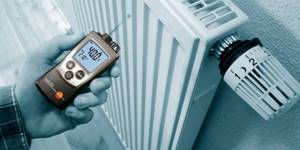
Heating appliances greatly reduce indoor humiditySource naimtruda.com
Humidity in workplaces
All people spend a large amount of time at work. And here, of course, there are occupational safety standards, where a special place is given to optimal air humidity for humans. It is clear that in different industries, according to the specifics of the technological process, the humidity inside the workshops is different. For example, in a greenhouse it is always high, but in a workshop where medicines are produced it is always low. And nothing can be done here.
A considerable part of people today work in offices
And here it is very important to comply with standards that fully comply with residential premises. That is, it is 30-60%
It should be noted that a higher parameter in offices is not desirable, because they contain equipment, furniture and paper documentation. Although high humidity is rare in office premises.
But low is common. In this case, company leaders quickly found a way out. This is the installation of different types of humidifiers. This is the simplest and cheapest option.
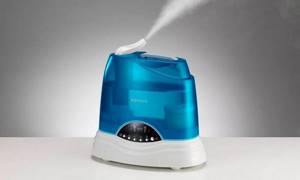
Indoor humidifierSource simpalsmedia.com
Normal air humidity in a child's room
The optimal air humidity for a child in an apartment is determined based on his age. Compliance with this parameter is especially important for newborns:
- Features of thermoregulation in infants. The drier the air (which the child inhales), the more fluid the body will spend to hydrate it. This is associated with large losses of water - dryness of the mucous membrane of the nasopharynx and nasal cavity occurs, and it is difficult for the baby to breathe. As a result, he wakes up more often at night, eats poorly, and is capricious.
- Long heating season. In most Russian cities it lasts at least 6 months a year. Central heating radiators can reduce the initial humidity levels in a room by 20–40% or more. Low humidity during the heating season leads to frequent respiratory diseases, chronic rhinitis, and an increased risk of bronchial asthma.

Depending on the age of the child, it is determined what humidity should be in the bedroom.
For children in the first year of life, the optimal parameter is 50–70%, for children from 1 to 3 years old – 45–65%, for children over 3 years old almost adult norms are suitable – 50–60%.
How to measure humidity
Relative humidity in the room is measured using special devices - hygrometers. They have different designs and operating principles:
- Electronic. Usually combined with thermometers to simultaneously measure room temperature. In them, a thin layer of electrolyte is applied to the inner plate, through which voltage passes. The results are displayed on the indicator panel.
- Mechanical. Cheaper and easier-to-use instruments, however, can produce measurement errors of up to 8%. They operate without a power source and are available as tabletop or wall-mounted. They do not have a digital display, but are equipped with a dial and arrow.
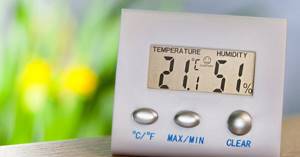
There are many ways to determine the saturation of air with moisture, not all of them are popular, but there are:
- Weighted or absolute. It is a device that determines relative humidity by absorbing it. Using special tubes with a chemical composition, he takes measurements. Do not use in domestic conditions.
- Hair. This type of hygrometer is used only in laboratories, and only because its operating principle is based on the study of human hair.
- Film. Also belongs to the category of laboratory instruments. The main mechanism is a special film, which, depending on the level of humidity, stretches or, conversely, contracts. It is most effective to use it in the winter season.
- Electronic. This type of device is most often purchased for household humidity measurements. It is quite simple to use, since the mechanism immediately displays the final measurement result on the touch screen.
- Psychometric. The most accurate type of moisture meter. Often it is purchased for work in production and laboratory premises. Also, many “civilian” users choose psychometric hygrometers because of their comparatively low cost and extreme accuracy.
To determine the standard air humidity in an apartment, an inexpensive mechanical hygrometer is suitable. For domestic use, certification by the metrological service is not required.
It is important to pay attention to the temperature range of use - the maximum value is 80–120 degrees. When used in a sauna or bathhouse, you must choose the extreme option.
Determining humidity without instruments
You can independently find out quite accurately the air humidity in the room without having any instruments. There are two options for this.
When measuring using the first method, you need to measure the air temperature in the room with a thermometer and record the readings. Then take a small piece of cloth or bandage, wet it and wrap the tip of the thermometer and leave it for about 5 minutes. Next, having calculated the difference in readings (subtract the smaller from the larger), you need to use a psychrometric table.
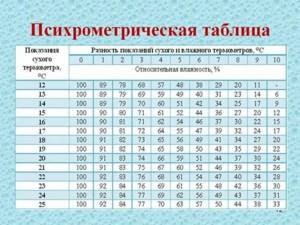
Psychometric table for determining relative air humidity
In the second case, you need to pour a glass of water and cool it in the refrigerator to +3...+5°C. After this, move the glass to a room away from heating devices and leave for 10 minutes. We look at the glass if:
- The glass is dry. The humidity in the room is insufficient.
- There is condensation on the walls. The humidity is fine.
- Large condensation and drips. The humidity is too high.
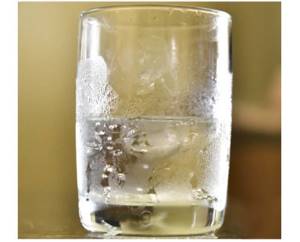
Increased condensation on a glass with drips indicates increased humidity
Measuring instruments
More accurate readings are provided by special devices.
Measuring with a hygrometer
Household hygrometers come in several types. Multifunctional electronic devices with built-in clocks, thermometers, and barometers are popular because they are easy to use.
Other types of hygrometers (hair, condensation, film, ceramic, electrolytic, weight) are used in accordance with the requirements of the operating instructions.
Using a psychrometer
Based on the readings of two thermometers to determine the air temperature. The flask of one is in water. Humidity readings are determined from a table based on the temperature difference between dry and wet thermometers.
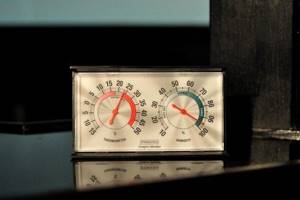
How to increase air humidity with household appliances
The most affordable and popular device for increasing humidity in the air is a household humidifier. It can be used all year round, but it will be especially useful in winter, when indoor humidity of 20 percent causes discomfort.
The following types of humidifiers are available:
- Classic. The operating principle of such devices is based on the evaporation of cold water without preheating. Water flows from a special container onto the evaporator - disk, filter or cartridge. Due to the fact that such devices take air from the room and release it after cleaning with a filter, additional removal of dust and allergens occurs.
- Humidifiers with air purification function. These are full-fledged climate control devices that simultaneously increase the level of humidity and purify the air by equipping them with special replaceable filters. They are also called air washers.
- Steam models. The operating principle of such devices is similar to the operation of an electric kettle. Heating elements with a ceramic plate or coil release steam after preheating the water. It is optimal to use both in summer and to maintain humidity levels in the apartment in winter.
- Ultrasonic. The most expensive and effective. The liquid poured into the reservoir flows onto a plate that vibrates under the influence of ultrasound. The water breaks up into tiny droplets, which enter the room through a cooler inside the case.

Air humidifier with cleaning function (air washing)
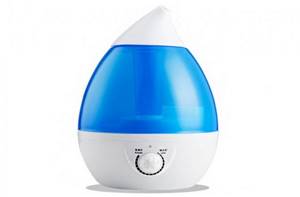
Steam humidifier
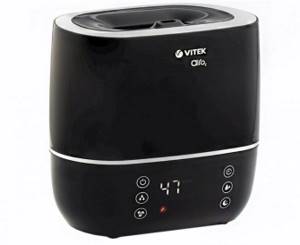
Ultrasonic humidifier
With the help of such devices you can not only create comfortable humidity in the apartment, but also regulate other parameters:
- control temperature;
- neutralize pathogenic microbes;
- trap dust and allergens.
The action of a humidifier can cover different areas, which must be taken into account when purchasing. Small household appliances are suitable for the bedroom or kitchen. For a living room or other larger rooms, you need a powerful device.
Ways to increase moisture index
In winter, a heating device makes the air flow dry; in summer, an air conditioner. Specially designed devices or folk remedies can cope with the increase in moisture.
Using humidifiers
There are three types of humidifiers on the market today. Their operating principle is to evaporate water from a specially designed reservoir and deliver moisture to the air atmosphere, which is so lacking.
Let's look at each in detail:
- Mechanical humidifier or traditional. This humidifier operates on the basis of an internal fan, which promotes the spread of air through a tray containing liquid, thereby cleaning dust particles and moistening. The main disadvantages of this device are the loud noise during operation, and it is also possible to humidify the air only up to 60%.
- Steam humidifier. This device functions almost exactly the same as a kettle. Due to the boiling water, steam penetrates into the room. You can use water that comes from the tap. But the steam humidifier also makes a lot of noise during operation and also consumes a large amount of electrical energy. We must not forget that when using a steam device, it is necessary to observe safety precautions, because hot steam can leave a burn on your skin. Steam can also negatively affect the surface of furniture and other objects.
- Ultrasonic humidifier. There is a specially designed membrane platinum that converts water into steam. This device makes the least noise during operation. Pathogenic microorganisms are killed thanks to the water heating function. It is important to use purified water to operate the device. Or you can purchase specially designed cartridges for purifying and softening water.
Some models of steam devices have special nozzles with which inhalation procedures are carried out. This is especially important during periods of illness that are respiratory. Such models are used if children live in the room.

Home methods
If there is no special humidifier in the room, then there is nothing wrong. To achieve the missing moisture, you can use time-tested methods:
- Using a container of water. To do this, you need to place containers with water near heating products. Due to this, the water will begin to evaporate and the moisture level will increase.
- Use of wet towels. We will use either napkins that are damp or wet towels. Throughout the day, towels must be moistened and placed on the radiator. As soon as the towel is dry, the procedure must be repeated.
- Plants. Houseplants are sources of oxygen and moisture in the air. To maintain an optimal microclimate, plants need to be constantly watered and sprayed. They are considered natural sources of moisture.
If containers with water cannot be placed somewhere, and there is no time for wet towels, what to do? To do this, just start an aquarium with fish. Or you can purchase a special tabletop fountain in which water circulates. This is both an excellent decoration and the presence of the required level of moisture indoors.
How to increase air humidity using folk remedies
Air humidity in a dry room can be increased using traditional methods:
- regular wet cleaning;
- frequent ventilation (not in sub-zero temperatures), especially after rain;
- installation of a mini fountain, aquarium or other water containers;
- growing flowers and watering them regularly;
- reducing the intensity of heating radiators using wet towels;
- using a spray bottle.

To increase the humidity in the room, you can dry clothes directly indoors, and not on the balcony or street. When cooking food, water vapor from boiling pots also enters the air.
How to reduce humidity
High humidity is not always a good thing. If mold, mildew appears on the walls, or condensation constantly collects, it must be reduced. You can use one of these methods:
- Dehumidifiers. Special devices absorb excess water molecules, taking air from the room. The principle of operation of such a device is based on the condensation of steam in the room. The air conditioner performs part of the functions of a dehumidifier - it also takes water from the air.
- Good ventilation. Clogged air ducts do not cope with the function of removing excess wet air from the apartment.
- Drying clothes outside or on the balcony. When drying, the fabrics release water molecules into the air, which circulates throughout all rooms and increases humidity.
- Sunlight. When it enters a room, it causes water to evaporate, so it is recommended to open windows regularly.
Some factors that increase humidity cannot be influenced:
- the more people live in an apartment, the lower this figure will be;
- if all the windows face north, the rooms most often have dampness;
- In some cities, climatic conditions determine constant high humidity.

